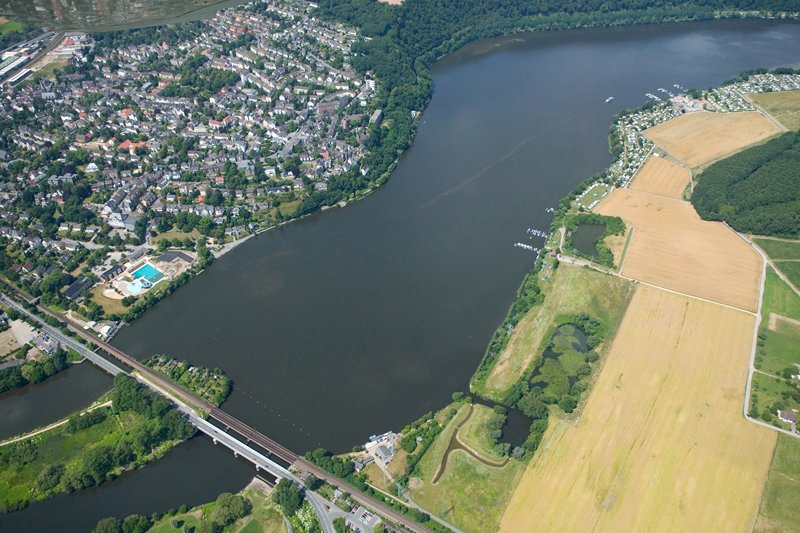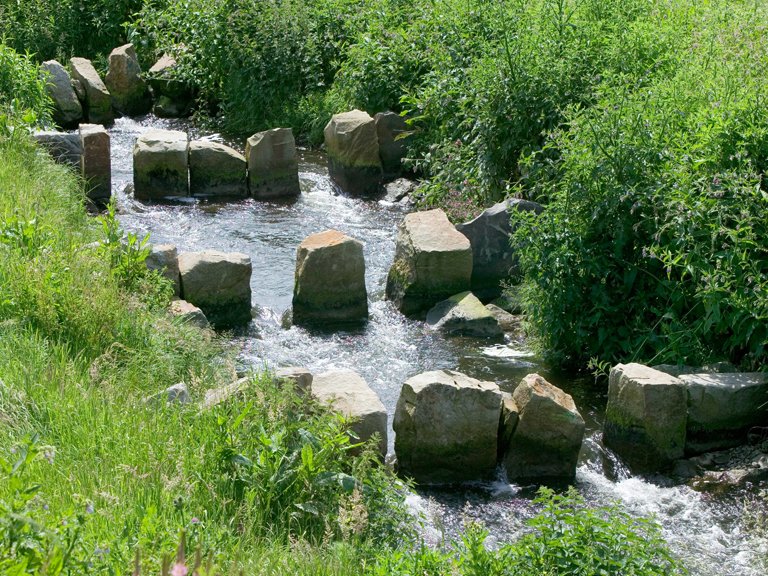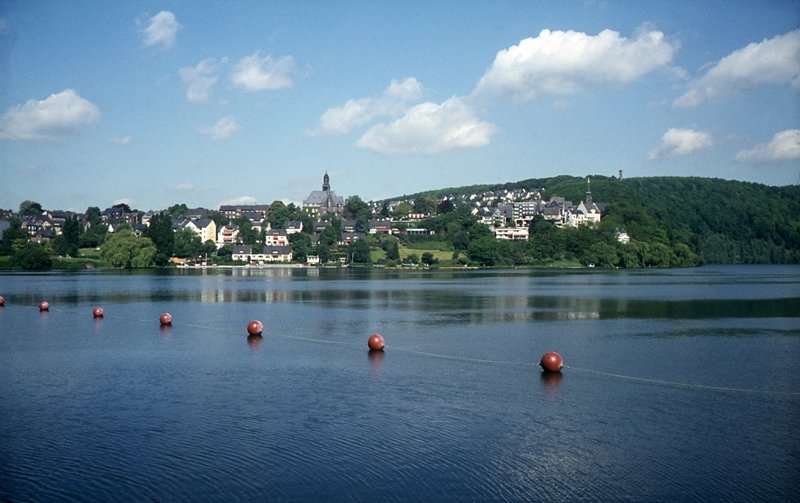Lake Harkort
Lake Harkort begins in the tailwater of the weir at Stiftsmühle. The weir has four openings with roller gates and is located underneath the Ruhr bridge, where the B 226 trunk road crosses the River Ruhr in the town of Wetter. A hydropower plant and a lock are situated approx. 800 metres downstream, fed by an outlet channel (head race). In 2004, a natural fish ladder was put into operation near the power plant, enabling fish to pass from the River Ruhr into Lake Harkort.
Lake Harkort provides for fine screening of inflowing water from the River Volme and the wastewater treatment plant in Hagen, mixing with the previously treated water from the River Ruhr and the River Lenne in Lake Hengstey. Moreover, the lake serves as a balancing reservoir for the pumped-storage hydroplant at Lake Hengstey. Regular water discharge from Lake Harkort equals the total inflow from the Ruhr, Lenne and Volme river system.
During pumping operation, no water is discharged from Lake Hengstey into Lake Harkort. As a result, the water level of Lake Harkort decreases by up to 50 cm. As soon as the turbines of the storage power station at Lake Hengstey are activated, Lake Hengstey and Lake Harkort fill up again.
After almost 70 years of operation, large parts of the lake were silted up, and in places, the lake was less than 50 cm deep. Therefore, from 1999 to 2003, a large dredging operation was carried out, during which up to 450,000 cubic metres of sediment were removed. Parallel to the dredging works, comprehensive ecological improvements were made to the lake’s surroundings, such as a pike spawning area, establishment of a chain of islands, which serves as a retreat for water birds, and the creation of standing water bodies.











